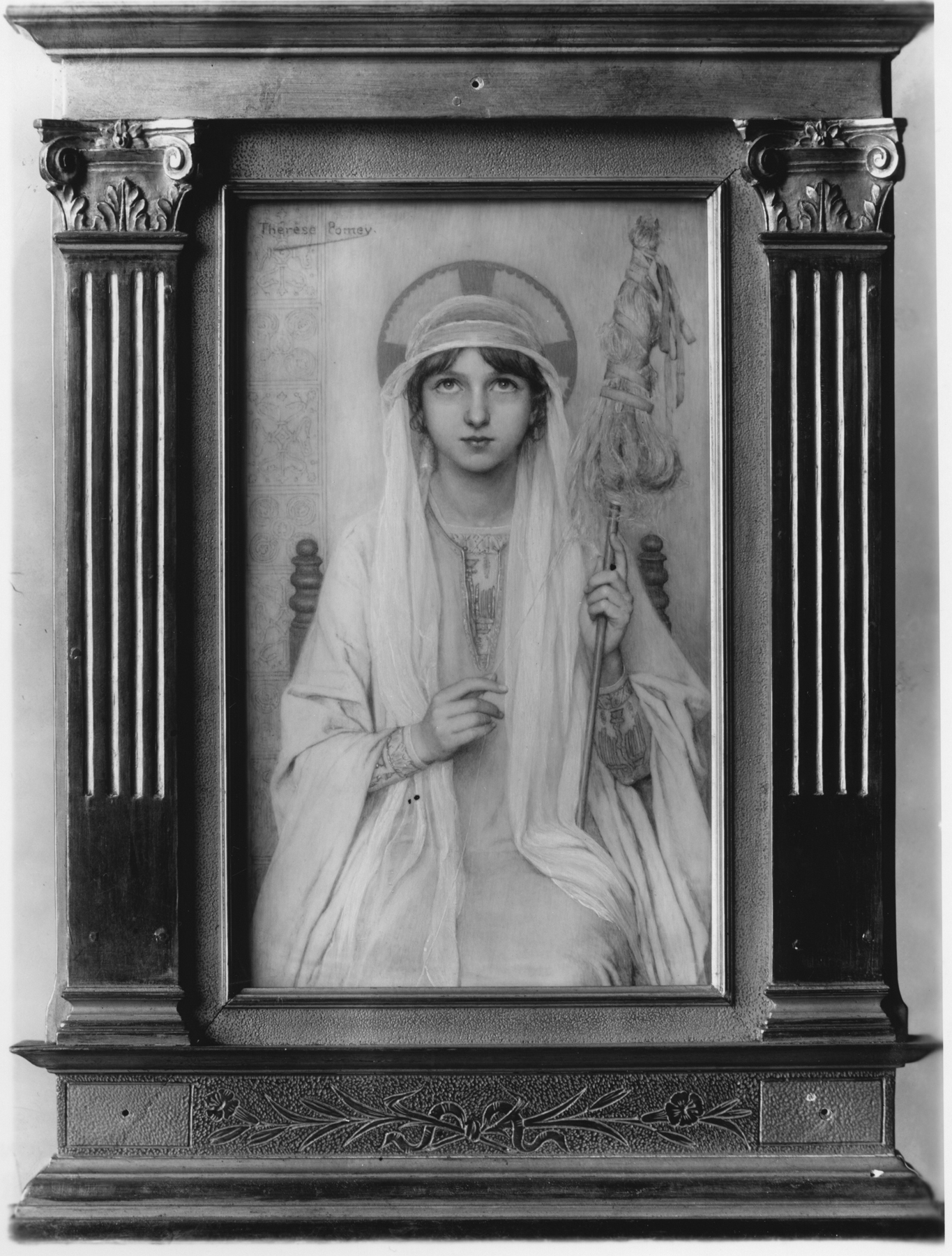The Virgin Annunciate
(18th and 19th Centuries )
Thérèse Pomey-Ballue studied under her father, Louis Edmond Pomey, who trained in the classical tradition under Swiss painter Charles Gleyre (1806-74). Her career as an artist was aided by the growing market of the late 19th and early 20th century for women's arts and crafts. At the Exposition Universelle of 1889, Pomey-Ballue won a silver medal for her work.
Most of her painting was limited to miniatures, and she frequently depicted her children or religious figures. In this gilt-framed watercolor on ivory, Pomey-Ballue shows the Virgin Mary seated holding a spindle. The symbolic meaning of the spindle dates back to 14th-century representations of the Virgin, alluding to her role as a mother and wife. The chore of spinning was considered to be a metaphor for a woman's virtuousness, as well as her submission to God and to her husband.
Provenance
Provenance (from the French provenir, 'to come from/forth') is the chronology of the ownership, custody, or location of a historical object.
Paris Salon; Henry Walters, Baltimore, 1908, by purchase [Lucas as agent]; Walters Art Museum, 1931, by bequest.
Exhibitions
| 1979 | A Baltimorean in Paris: George A. Lucas, 1860-1909. The Walters Art Gallery, Baltimore. |
Geographies
France (Place of Origin)
Measurements
8 11/16 x 4 15/16 in. (22 x 12.5 cm)
Credit Line
Acquired by Henry Walters, 1908
Location in Museum
Not on view
Accession Number
In libraries, galleries, museums, and archives, an accession number is a unique identifier assigned to each object in the collection.
In libraries, galleries, museums, and archives, an accession number is a unique identifier assigned to each object in the collection.
38.171


